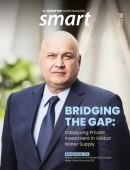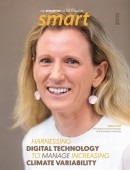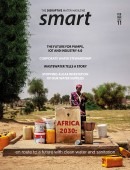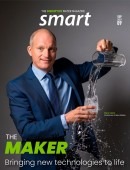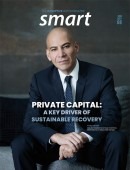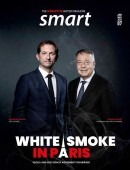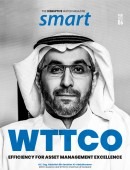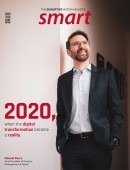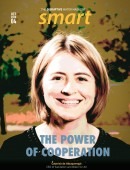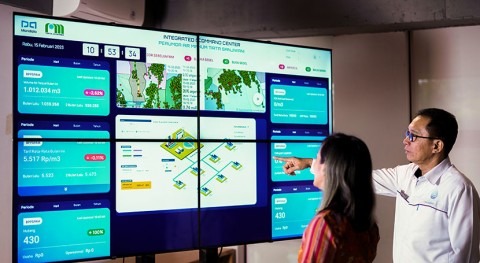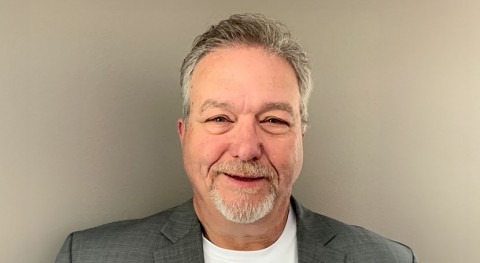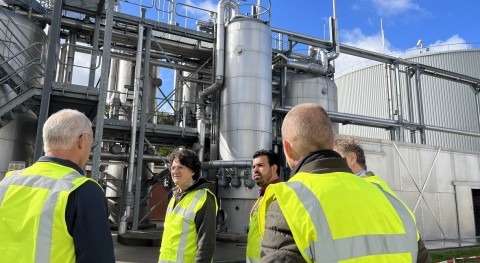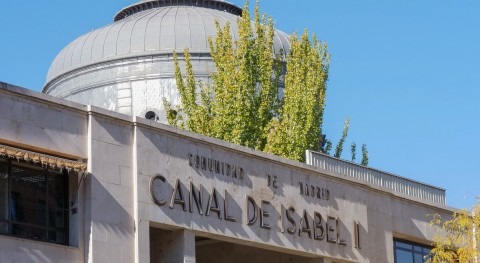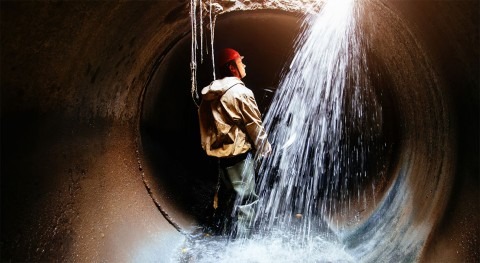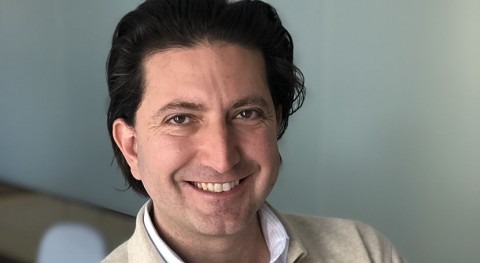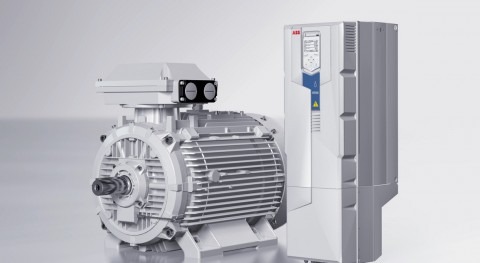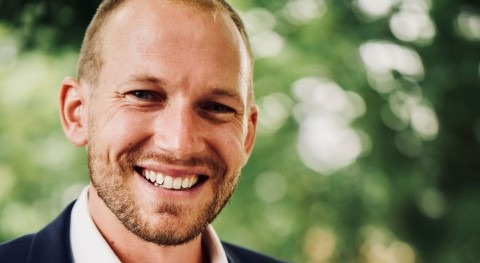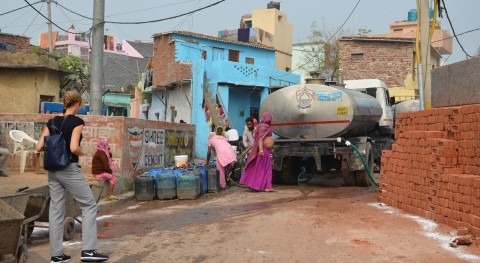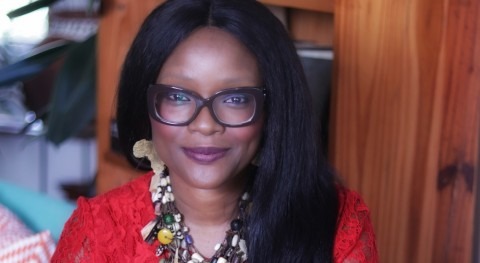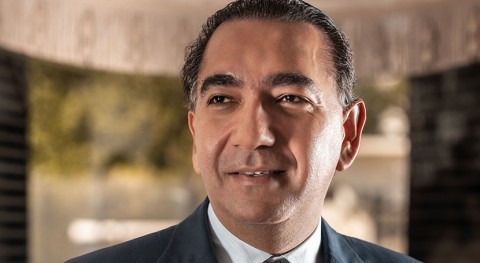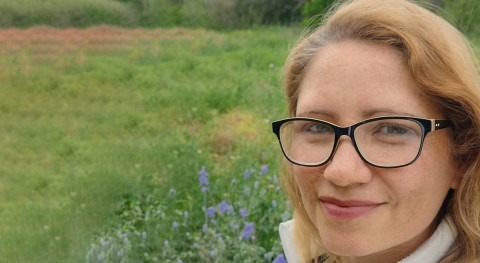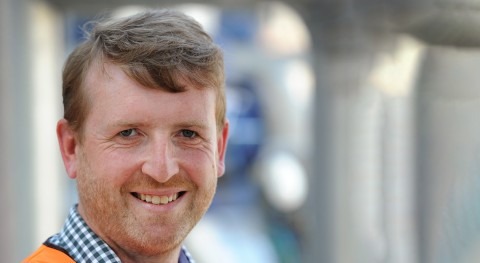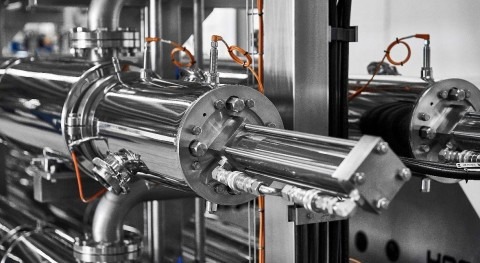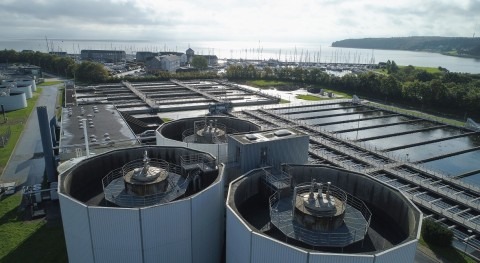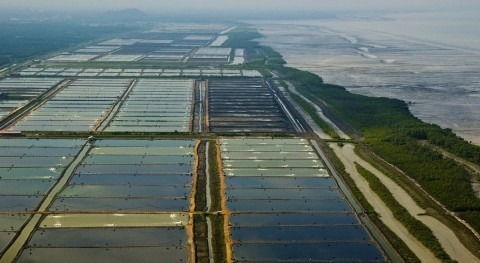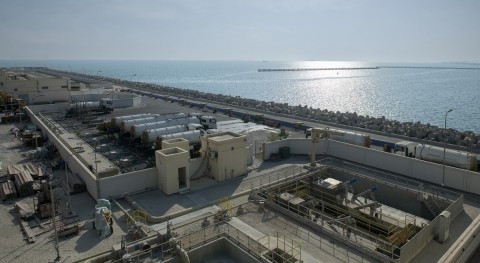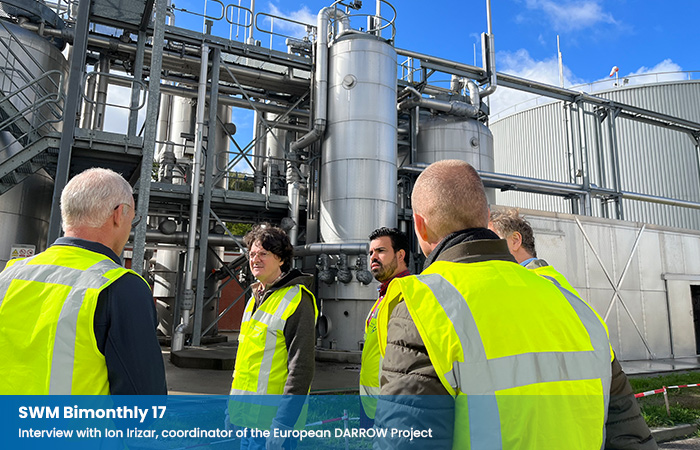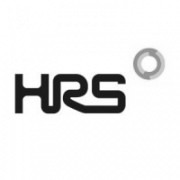Featured content
Content summary
We release the April issue of Smart Water Magazine Bimonthly. This month we put a special emphasis on wastewater and the most current issues in this area, including emerging contaminants, circularity and reuse, bioresources, and energy efficiency. Our cover features Nader Antar, President of Saur International, who shares, in an exclusive interview with Olivia Tempest, the Group’s strategy to grow their operations around the world. Other market leaders share the details of their solutions for efficient water treatment, including an interview with Baptiste Rogeau on the technology behind the filter media of Filtralite, and feature articles on HRS’ heat exchangers and ABB’s SynRM motors. We also travel to Bahrein with Almar Water Solutions to read about the Muharraq WWTP. Our digital section shows more successful case studies, by Siemens, using AI and IoT to address sewer network pollution in England, as well as a remote metering project by Hidroconta in Spain. Moreover, Envirosuite discusses how their SeweX advanced modelling tool can help utilities manage the environmental impact of sewer networks. This issue has all our usual sections as well, with opinions and interviews on relevant issues for the water industry, such as with Nathalie Olijslager Jaarsma, Program Director of the UN 2023 Water Conference, about the outcome of this historic event. Find this and a lot more in Smart Water Magazine Bimonthly 17.
Features
Envirosuite offers tools for water utilities to manage the environmental impact of sewer networks, often overlooked assets

HRS discusses heat exchangers in wastewater systems, and some of the factors to take into account for process and energy efficiency

The digitalisation of 100,000 smart water meters consolidates Spanish company Hidroconta in the development of remote metering projects
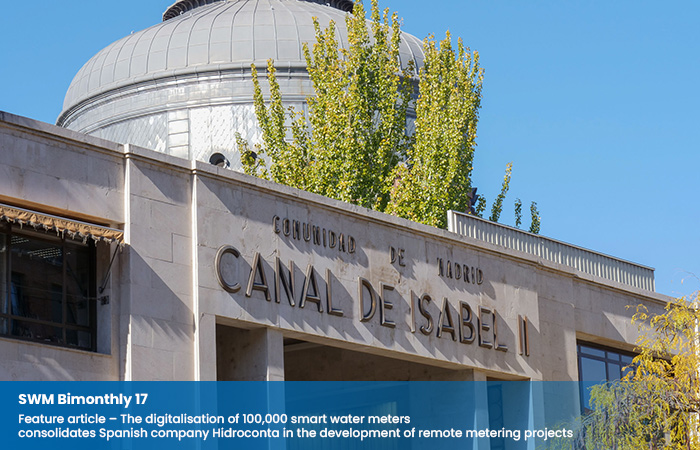
Almar Water Solutions presents the Muharraq project, a unique facility with sanitation, treatment and reuse capacity under a PPP scheme
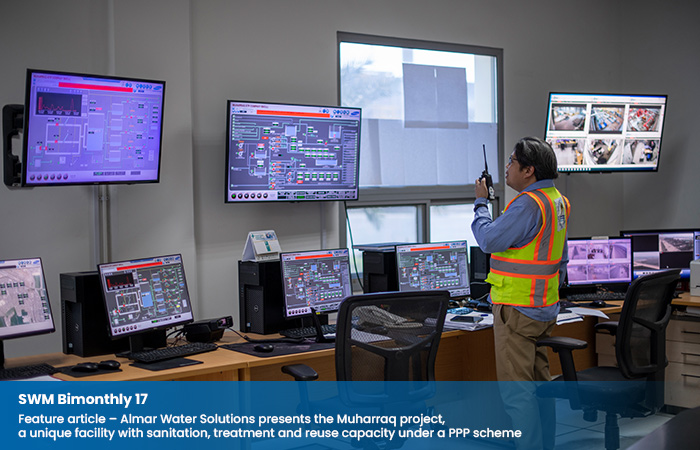
Siemens, Yorkshire Water, and the University of Sheffield have joined forces to reduce wastewater network blockages and pollution

Energy efficient SynRM motors by ABB are the key to cutting costs and reducing emissions at water and wastewater facilities

A look at the evolving approaches to manage the risks from PFAS exposure in drinking water, a major concern for the water sector

The UN 2023 Water Conference was a milestone for water action; we explore the outcomes and path forward for the global water community

Interviews
Interview with Nader Antar, President of Saur International.
- Internationalisation is a strategic pillar of the Group, and by 2025, we will have to contribute almost 50% of Saur's revenue
- We have opened our headquarters in Dubai to better address water challenges in this region, and where there are numerous opportunities
- We will strengthen our commercial and operational excellence to serve our customers and populations through four growth levers
- Our ambition is to become the champion of the water transition by 2030, making responsible water management a reality where we operate
- Saur has invested €200 m in digital over the past three years and is aiming to automate 80% of activities by 2025, thanks to AI
- By 2025, we aim to reduce our water withdrawal per consumer by 0.5% every year and to divide our carbon intensity by six

Interview with Baptiste Rogeau, Key Account Sales Manager at Filtralite.
- Filtralite is one of many innovative brands within the Saint Gobain Group, dedicated to water filtration and part of LECA International
- Our most popular product family is Filtralite® Pure, for drinking water purification, with different types of product characteristics
- In all our projects, Filtralite performs better than sand in terms of water quality, while reaching much better filtration performance
- We can clean more water in the same amount of time, so our clients deliver more water or save operation costs by using fewer filters
- Filtralite is active on all continents, and we have completed more than 400 projects worldwide which offers a solid reference list
- The water market is changing quickly; it is difficult to know how fast it will grow in the future, but we see public awareness increasing

Interview with Stephen Riches. Portfolio Lead Bioresources - Asset Delivery Planning at Anglian Water Services
- Our long-term strategy will be aligned to industry wide work to produce a National Bioresources Strategy commissioned by Water UK
- Innovation has been key in the development and deployment of advanced anaerobic digestion (AAD) technology now predominant in the UK
- Our bioresources operations have been productionised and it’s an area that continues to develop rapidly with the use of smart technology
- Investing in technology to measure and mitigate process emissions from our bioresources operations will support our net-zero ambitions
- It is not sustainable to allow pollutants to be discharged to sewer and expect wastewater treatment to be the barrier to prevent release
- Biomethane for grid injection is rising in popularity, a solution that reduces the carbon impact of heating homes and businesses

Interview with Nathalie Olijslager Jaarsma, Program Director, UN 2023 Water Conference
- Our aim was to create a historic event for the change needed to address the water challenges of the world and prevent the next crisis
- Considering the limitations we were facing in organising the Conference, I think we were able to push the boundaries as far as we could
- UN Water encompasses the big UN and relevant organisations, but they are not given the power to coordinate water action across the system
- My advice to the private sector is to step it up and bring the discussion of water security to the boardroom: invest in water
- Water expertise is needed in banks and financial institutions, in companies, in governments and households, as well as in the media

Interview with Juan Bofill, Senior Water Engineer at European Investment Bank
- The private sector is a crucial ally for public financers like the EIB to reach the global climate and sustainable development goals
- More than 96% of the 1.5 million tonnes of microplastics are discharged yearly to the oceans by water pathways, similarly to micropollutants
- The EU directives on drinking water and urban wastewater treatment are key to achieve the 30% microplastic reduction target by 2030
- Regular WWTPs are usually designed to eliminate macro-pollutants and do not fully remove micropollutants from treated wastewater
- Some studies value the addition of the quaternary treatment to between €70 and €95 per capita, depending on the selected technology
- At present, wastewater utilities do not have significant incentives to invest in reducing the release of microplastics or micropollutants

Interview with Amanda Loeffen, CEO, Human Right 2 Water
- Our goal is to understand the causes of the problems with access to water and sanitation to design a set of human rights-based indicators
- The capture and monitoring of rights-sensitive data provides an understanding of the areas for investment and a pathway for authorities
- Sadly, water and sanitation are areas that are easily overlooked, because they are difficult to solve and take a long time to fully resolve
- The differential between developed and developing countries is marked not only in the GDP but also in the carbon footprint per head
- In my opinion, we need to share knowledge and skills in a way that will support developing nations to jump the technology gap
- Innovation can take many forms, from the process of deciding on the right solution, including the participation of the local community

Interview with Kirill Horoshenkov, Professor of Acoustics in the Department of Mechanical Engineering at the University of Sheffield
- In order to detect the onset of wall damage or small leaks in a pipe it was necessary to bring a sensor close to its location
- Pipebots go inside the pipe so that sensors can get much closer to the defect enabling to find small leaks that are currently undetectable
- Pipebots work from in a pipe network so that the inside of pipes is well visible and they can navigate themselves and map the network
- Identifying small leaks and fixing them without road excavation and preventing new leaks means that the cost of network maintenance is low
- There is a lot of interest in Pipebots technology in many parts of the world because the problems it is designed to solve are global

Interview with Vanessa Nunez-Lopez, Director of Advanced Remediation Technologies, U.S. Department of Energy, Office of Fossil Energy and Carbon Management
- The Water Management programme focuses on research to fully treat oil and gas produced water so it can be beneficially reused
- Produced water can be an alternative source for other industries and users, or be used to recover critical minerals and rare earths
- We expect to fund technologies that can remove total dissolved solids effectively and economically and also remove emerging contaminants
- New challenges arising include emerging contaminants of concern and induced seismicity triggered by underground injection of produced water
- Critical mineral recovery within existing operations can help offset the costs of treating produced water, depending on mineral composition
- The technologies developed can help facilitate decarbonisation, such as by providing an alternative source of water for hydrogen

Interview with Dr Musonda Mumba, Secretary General of the Convention on Wetlands
- As the Secretary General, I have the responsibility to help connect the dots across the multilateral space and raise the visibility of our convention
- When there are landscape changes, such as degradation, compounded further by climate change, we see water insecurity as a consequence
- Wetland restoration requires a landscape approach with concerted efforts across sectors because degradation is linked to multiple factors
- The ambition of the Convention on Wetlands has been to have a balance between the conservation and wise use of wetlands ecosystems
- As co-custodian of SDG 6 indicator 6.6.1, we have the opportunity to bring the wetlands agenda into the UN system and processes
- The challenges of water, particularly droughts, floods and other issues such as plastics manifest more pronouncedly in wetland systems

Interview with Morten Rebsdorf, Senior Project Manager at Aarhus Vand
- The main focus is the strategic and operational focus of GHG mitigation, GHG Protocol, and how the CSRD will affect the GHG accounting
- Close collaboration with other utilities, universities and technology providers is crucial to gain and develop the required knowledge
- Monitoring N2O is possible with sensors placed in the water phase and off-gas measurement with skilled staff for maintenance and calibration
- Energy self-sufficiency via biogas production can reduce the GHG footprint, if the purchased energy for treatment processes is fossil-based
- Aarhus Water is certified according to standards for environment and climate, working environment, drinking water safety and sustainability
- I would imagine that we will see larger regional differences in how the treated wastewater is reused, depending on the demand for water

Interview with Ion Irizar, coordinator of the European DARROW Project
- Water treatment plants are meant to last decades, so transforming existing ones into resource recovery plants is neither quick nor easy
- Wastewater facilities have been trying to reduce their energy consumption for years, and that is where data and AI come in
- The DARROW project is developing systems to recommend the right level of aeration based on data about the quality of the water
- We can train the system to detect when a sensor is giving erroneous readings, so that control systems go into safe operation mode
- We can only implement AI tools if operators understand how we have designed them, how they work, and what underpins their recommendations
- Plants with high levels of digitisation and AI call for advances and cheaper sensors, which only large plants can currently afford
Opinion articles
Alexander Loucopoulos, Partner at Sciens Water
John Brockgreitens, Vice President of Research and Development at Claros Technologies
Frank Janssens, Vice President of Middle East and Africa, KROHNE
Al Cho, Chief Strategy and External Affairs Officer, Xylem
Murtaza Hashwani, Deputy Chairman & CEO Hashoo Group & Chairman Hashoo Foundation
Eric Whitley, Director of Smart Manufacturing at L2L
Putri Respati, Director of Bima Sakti Alterra


